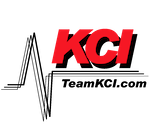On-Site Third-Party Hardware Maintenance: Advantages and Best Practices
On-site third-party hardware maintenance has become a popular choice for businesses looking to maintain their equipment effectively. In this article, we will explore the advantages and best practices associated with on-site third-party hardware maintenance.
One of the significant advantages of on-site third-party hardware maintenance is the reduced downtime. When businesses experience equipment failures or malfunctions, it can result in significant disruptions, leading to loss of productivity and revenue. By utilizing on-site third-party maintenance services, businesses can quickly resolve these issues without having to send the equipment off-site for repairs, which can take days or weeks. On-site third-party maintenance providers have technicians who can come directly to the business location, assess the problem, and perform the necessary repairs on the spot. This immediate response minimizes downtime, ensuring that businesses can continue their operations smoothly.
Another advantage of on-site third-party hardware maintenance is cost savings. Outsourcing hardware maintenance to third-party providers can be more cost-effective for businesses compared to hiring an in-house IT team or relying solely on manufacturers’ service agreements. On-site third-party maintenance providers often offer more competitive pricing for their services, which can result in significant savings in the long run. Additionally, businesses can save on labor costs associated with training and retaining an in-house IT team. Through on-site third-party hardware maintenance, businesses can gain access to trained and experienced technicians who specialize in specific equipment or devices, ensuring efficient and effective repairs.
To make the most out of on-site third-party hardware maintenance, businesses must adhere to some best practices. First and foremost, it is crucial to thoroughly evaluate and choose a reputable and reliable on-site third-party maintenance provider. Research their track record, read customer reviews, and check their certifications and experience in handling the specific equipment or devices your business utilizes. Engaging with a reputable provider will ensure high-quality service and minimize risks.
Communication is another critical aspect of successful on-site third-party hardware maintenance. Businesses should establish clear lines of communication with the on-site maintenance provider, ensuring that they can promptly reach out when issues arise. This enables timely response and resolution, minimizing downtime. Both parties should establish communication protocols and ensure that they are readily available when needed.
Regular preventive maintenance is also an essential best practice to adopt with on-site third-party hardware maintenance. By scheduling routine maintenance visits, businesses can identify and address potential issues before they escalate into significant problems. This proactive approach reduces the risk of unexpected equipment failures and minimizes downtime. The on-site third-party maintenance provider can create a customized maintenance plan tailored to the business’s specific needs and equipment requirements.
In conclusion, on-site third-party hardware maintenance offers several advantages for businesses, including reduced downtime and cost savings. By utilizing on-site services, businesses can quickly resolve equipment issues without having to endure lengthy off-site repairs. Additionally, outsourcing hardware maintenance to third-party providers can be more cost-effective compared to hiring an in-house IT team. However, to make the most of on-site third-party hardware maintenance, businesses must adhere to best practices such as choosing a reliable provider, establishing clear communication channels, and implementing regular preventive maintenance. By doing so, businesses can ensure efficient and effective maintenance of their equipment, enabling uninterrupted operations and improved productivity.

